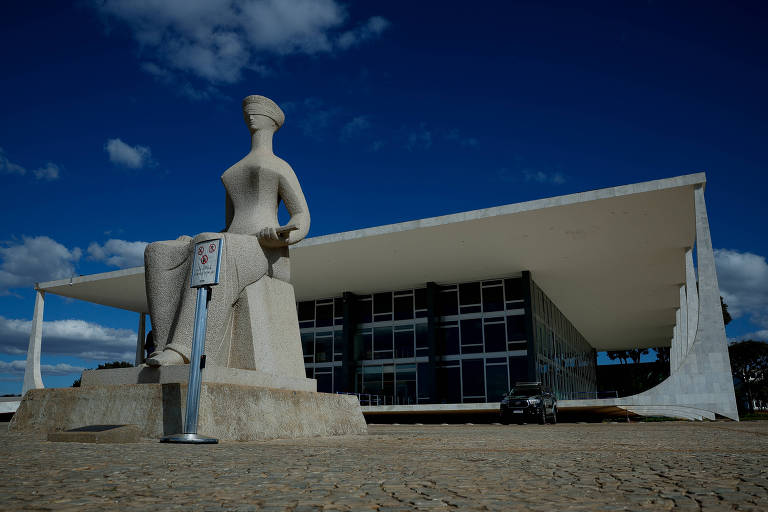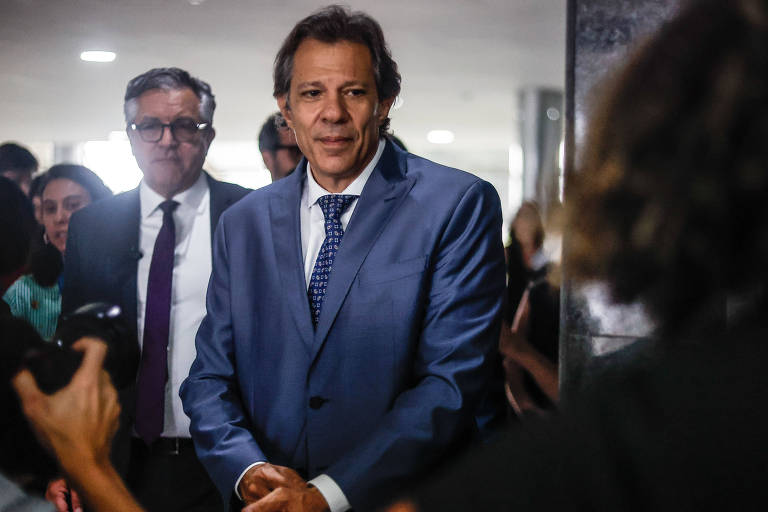STF decision to circumvent framework has the opposite effect and reduces spending limit

The decision by the STF (Federal Supreme Court) to remove from the fiscal framework the Judiciary's expenses financed with its own revenues had the opposite effect to that expected and reduced the limit that the bodies have for their expenses in 2025.
The figures were updated by the Ministry of Planning and Budget in a report published on May 22. For now, the diagnosis is that the decision has already taken R$87.3 million from the Judiciary.
The cut could be even greater, of almost R$1.5 billion, if legal costs are also considered own revenue and, therefore, the expenses paid for by them are also excluded.
This specific point is the subject of a new trial, which began on June 27 and is still ongoing.

The Union filed a kind of appeal to clarify a doubt about the classification of costs. The rapporteur, Minister Alexandre de Moraes, rejected the request, said that there is no controversy and reaffirmed that they are its own revenues — therefore, they should be left out of the framework.
The other ministers have until August 5 to vote on the case, which will be analyzed in the Court's virtual plenary session. If they follow the rapporteur's vote, the Judiciary will need to reduce its expenses by R$1.465 billion this year, according to Planning's calculations.
The unexpected side effect stems from the Executive's interpretation of the STF's decision . The Court responded to a request from the AMB (Brazilian Magistrates Association) for the Judiciary to be treated in the same way as universities, federal institutes and science and technology institutions, which have been able to use their own revenues to finance expenses outside the framework since the rule's origin, approved in 2023.
In the case of the Judiciary, however, these expenses were included in the calculation basis for the limit, which is adjusted year after year for inflation plus a real gain of up to 2.5%. Therefore, simply excluding these amounts would generate a double benefit: the ceiling would be inflated, and there would still be extra room to spend outside the limit.
The economic team adopted the understanding that, given the STF decision, it is necessary to recalculate the Judiciary's space according to the rules of the framework. The logic is: whenever an expense is included or excluded from the rule, it is necessary to go back to the origin (in this case, the year 2023), review the calculation basis and then update the values for the following years.
The same procedure was used on other occasions, both under the spending cap created by the Michel Temer (MDB) government and under the fiscal framework of the Luiz Inácio Lula da Silva (PT) government. In one of these cases, the Judiciary itself benefited: it complained about the undue exclusion of an expense and obtained not only a higher limit, but also the refund of money not spent in previous years .
By applying the same logic now, there is a reduction in the limits because the amount of exceptional expenses was greater in 2023 than the amount foreseen in the 2025 Budget.
Two years ago, the Judiciary's own revenues totaled R$52.5 million. Today, they are estimated at R$30.5 million. The same is true regarding the inclusion of costs: revenues totaled R$1.12 billion in 2023, and are now expected to be R$1.04 billion.
The government believes it has technical and legal justifications for recalculating the limits of the Judiciary, but given the negative result, the fear now is that the Supreme Court will decide to propose an alternative solution to offset the loss. This would be the worst-case scenario from the economic team's point of view, as it would increase the government's total expenses at a time of tight budgets and rising public debt.
On the merits, the economic team was never in favor of excluding expenses, as the measure leaves room for other similar decisions. Furthermore, although the current outcome is unfavorable to the Judiciary, any increase in own revenues could minimize the cut or even allow for a greater volume of expenses.
According to the Planning Department's calculations, in the scenario of the lowest loss, the most affected will be the Justice of the Federal District and Territories (R$51.8 million), Labor Justice (R$25.3 million) and Military Justice (R$10.3 million). The others will remain with the same space or will have marginal gains.
When considering costs, the most significant losses would be felt by the Labor Court (R$767.2 million), Federal Court (R$325.2 million) and Electoral Court (R$176.1 million), but all would have lower limits, with the exception of the CNJ (National Council of Justice).
Folha contacted all Judiciary bodies to find out how they will adjust to the new limits.
The TST (Superior Labor Court) said that the amounts are not yet final and may change, given the judgment still pending in the STF. "Until then, expenses will be maintained within the current limits, monitoring the process for future revisions," it said.
The STJ (Superior Court of Justice) stated that it could not take a position "in the face of a scenario of probabilities" and that it is necessary to await the final judgment of the action. In the same vein, the CJF (Federal Justice Council) said that, at the moment, any actions depend on the judgment of the declaratory appeals.
The TSE (Superior Electoral Court) stated that the action is still ongoing and that the body "does not comment on hypothetical issues".
The general management of the STM (Superior Military Court) informed that, if there is a recalculation of its limit, "the discretionary expenses related to the Processing of Causes and Administrative Management action will possibly be reassessed, especially those related to engineering services and new hires that were foreseen in the Annual Hiring Plan".
The TJDFT (Federal District and Territories Court of Justice) stated that, if the action is definitively upheld and the agency receives its own resources, the amounts will be used for structural issues, such as improving the technology park and expenses for the digital transformation plan. "If the court does not receive the new limit, the technical team will make the budgetary adjustment with a forecast until the end of the year."
The STF did not respond. The CNJ did not wish to comment.
uol






